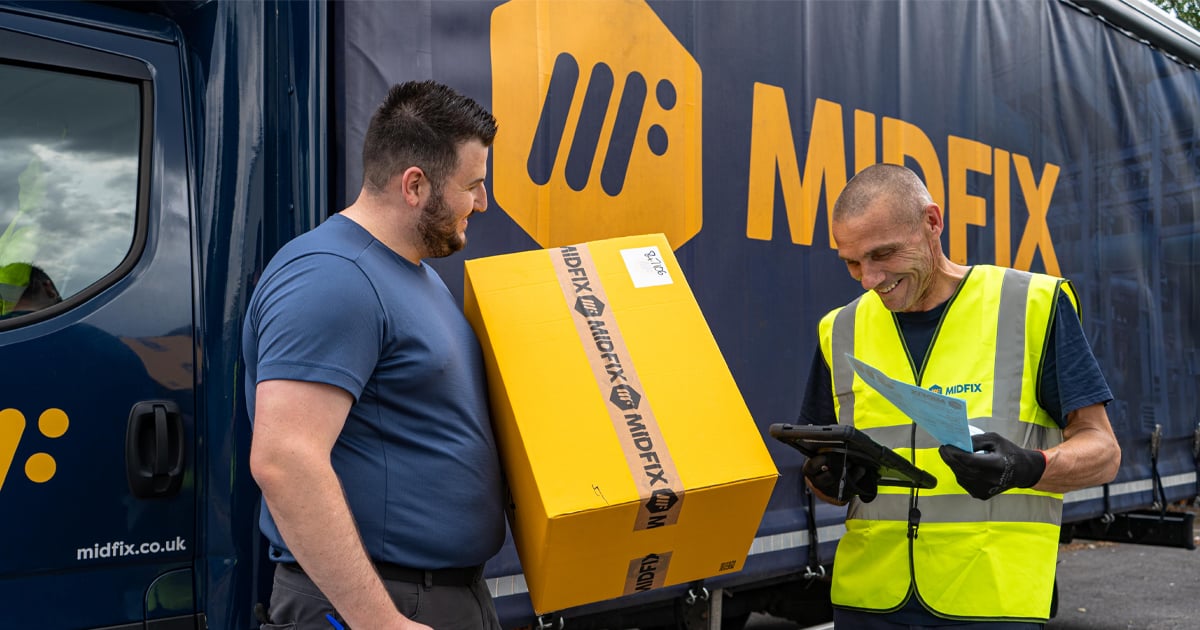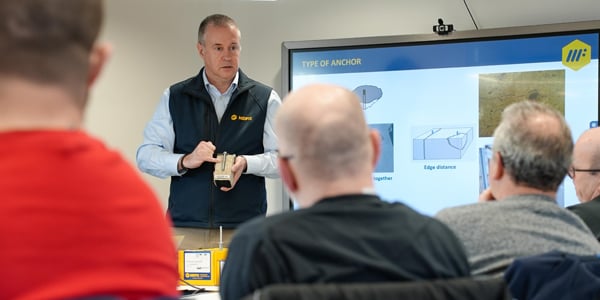In the dynamic field of M&E installations, the debate between adopting tested channel systems versus traditional untested channel bracket assemblies is more relevant than ever. This comprehensive analysis aims to dissect the pros and cons of each, factoring in not only the upfront investment but also installation efficiency, adaptability, safety implications, environmental impact, and long-term financial considerations.
- Traditional Untested Channel & Bracketry
- Tested Channel Systems: A Paradigm Shift
- Upfront Costs: An Investment in Safety and Compliance
- Time and Labour Considerations in Channel System Installations
- Long Term Savings
- Conclusion
Traditional Untested Channel & Bracketry
For decades, traditional untested channel bracket assemblies have been the standard in the industry. These “systems” typically comprise various components sourced from different manufacturers, assembled without comprehensive system-level testing. While initially more cost-effective, these support systems can pose significant risks. Lack of standardised testing often leads to inconsistent quality, potential safety hazards, and non-compliance with contemporary building safety standards, such as the 2022 Building Safety Act. Moreover, the absence of a unified testing approach makes them susceptible to bracket suspension failure, jeopardising the integrity of the entire M&E installation.
%20(1)-1.png?width=4240&height=2832&name=MicrosoftTeams-image%20(981)%20(1)-1.png)
Tested Channel Systems: A Paradigm Shift
Tested channel systems represent a paradigm shift, focusing on safety and compliance. These systems undergo rigorous testing as a complete unit, ensuring all components are made by the same manufacturer and designed to function together effectively. This holistic approach to testing aligns with stringent safety standards, significantly reducing risks associated with installation errors and component incompatibility. By ensuring that each part of the system works in harmony, tested channel systems enhance the reliability and longevity of M&E installations.
Upfront Costs: An Investment in Safety and Compliance
One of the primary considerations when choosing a channel system is the upfront cost. This is why many contractors opt for the traditional approach of channel frames – because they believe it is more cost-effective to mix and match the cheapest components on the market to build a system. However, while tested channel systems may initially appear more expensive, you are paying for much more than you realise.
So why do tested channel systems cost more than traditional untested channel? This cost difference is attributed to several factors:
- Comprehensive Testing: Tested systems undergo rigorous evaluations to ensure each component functions effectively as part of the system. This testing incurs additional costs but is essential for ensuring safety and compliance.
- Quality Materials: These systems often use higher quality materials to meet testing standards, contributing to their higher cost.
- Optimised Design: The design is optimised to ensure that there is no requirement for over-engineering and wasting excess material just to ensure that the bracket assembly is fit for purpose.
- Training and Certification: Implementing tested systems usually requires specialized training for installers. This ensures that the system is installed correctly, adhering to safety standards, but also adds to the upfront costs.
- Identification: Tested channel systems offer greater identification and traceability as all the components come from one source.
- Documentation: Tested systems come with reliable test data and certifications that are standardized and readily available.
- Compliance: Tested channel systems significantly streamline the process of producing necessary documentation and evidence for compliance and safety purposes. This aspect becomes particularly vital considering stringent regulations like the 2022 Building Safety Act, which emphasizes the need for verifiable evidence of safety and compliance in construction projects.
Keep reading this article to discover why these features are important.
.jpg?width=8256&height=5504&name=For%20Off-Site%20Fabrication%20(2).jpg)
In contrast, traditional channel bracket assemblies are generally less expensive upfront due to:
- Lack of System-Level Testing: The separate components do not undergo rigorous testing as a system, reducing initial costs. While each individual component may come with its own manufacturer’s load data, without system-level testing, it's difficult to ascertain how different components will perform together, raising questions about the overall safety and reliability of the assembly.
- Unoptimized Design: When individual components are not designed as an integrated part of a unified system, combining them in an installation poses challenges in validating the overall performance. This uncertainty often leads to a practice of over-engineering as a precautionary measure. Over-engineering involves selecting materials and components for the bracket assembly that are larger and more robust than necessary. While this approach provides a certain level of reassurance, it also results in increased costs, both in terms of materials and labour, as it does not rely on a systematically validated design but rather on a more cautious, and potentially excessive, approach to ensure safety and performance.
- Variable Component Quality: With components often sourced from various manufacturers, there can be inconsistencies in quality, but this also allows for lower prices.
- Simplified Installation: Untested systems may not require specialized training for installation, reducing labour costs in the initial phase. However, this increases the likelihood of installation inaccuracies, increasing the need for future reworks and maintenance and the costs associated with those.
- Lack of Evidence: Traditional channel does not come with reliable evidence to support their performance, as they have not undergone any compatibility testing as a unified system. Therefore, there is no guarantee that the final installation is fit for purpose and would be able to withstand the service load applied to it.
- Lack of Compliance: The lack of reliability, identification, and traceability means that untested channel systems do not meet the safety and compliance standards and regulations such as the Building Safety Act 2022.
While tested channel systems have a higher upfront cost, they offer significant value in terms of safety, compliance, and long-term reliability. In contrast, the lower initial cost of untested systems can be appealing, but it's important to consider potential hidden costs like non-compliance penalties, safety risks, and future system failures.
Time and Labour Considerations in Channel System Installations
When selecting between tested system and traditional untested bracketry, time and labour considerations are crucial factors that significantly impact project timelines and overall efficiency. This aspect is multifaceted, encompassing the installation process, training requirements, and the long-term maintenance implications.
Procurement Process:
Tested Systems: Tested channel systems are typically procured from a single source. This simplification in sourcing significantly eases the procurement process. A single-source system ensures consistency in quality and compatibility, as all components are designed to work together seamlessly. It eliminates the need to coordinate with multiple suppliers, reducing the complexity and potential errors associated with mismatched components from different manufacturers (not to mention that it is also an environmentally sustainable option!). The reliability of receiving components that are part of a tested system also eliminates the need for extensive quality checks and compatibility tests.
Traditional Bracketry: In contrast, brackets made with untested channel and components often require sourcing components from various suppliers. This multi-source procurement can lead to complications in ensuring compatibility, varying quality standards, and logistical challenges in coordinating deliveries. Ensuring that each component meets the necessary criteria and is compatible with others sourced from different suppliers demands thorough quality assurance and management processes. The time and effort spent on vetting each component and supplier can extend the procurement process, potentially delaying the project start.

Installation Process:
Tested Systems: The installation of tested channel systems is often more methodical and standardized due to the comprehensive nature of the systems. Each component is designed to fit seamlessly within the system, reducing the time spent on figuring out compatibility issues. However, the precision and training required in installation can initially slow down the process, as installers need to follow strict guidelines to ensure the system functions as tested.
Traditional Bracketry: Traditional untested systems, in contrast, may allow for more flexibility during installation. However, this flexibility can be a double-edged sword. The lack of standardized components can lead to increased time spent on troubleshooting and modifying parts to fit together. This improvisation not only extends the installation time but also risks compromising the system's integrity.
Training Requirements:
Tested Systems: The specificity of tested channel systems often necessitates specialized training for installers. This training ensures that the installers are fully aware of the system's nuances and installation requirements. While this training is an upfront time investment, it results in more efficient and accurate installations, reducing the likelihood of future system failures and the need for rework.
Traditional Bracketry: With untested channel support systems, the training requirements are generally less stringent, allowing for a broader range of installers to participate in the installation process. However, this lack of specialized training can lead to inconsistencies in installation quality, potentially increasing the time spent on future maintenance and corrections.

Long Term Savings
When assessing long-term costs, it's crucial to consider factors beyond the initial purchase price and the savings over the lifespan of a project.
Maintenance and Durability
Tested Channel Systems are built to last, reducing the frequency and costs of maintenance and replacement. The rigorous testing ensures that the components can withstand the loads and conditions they will face, decreasing the likelihood of failures that necessitate costly repairs or replacements.
In contrast, traditional untested bracketry systems may not offer the same level of durability, leading to more frequent maintenance needs and potential system failures, adding to the long-term financial burden.
Lower Time and Labour Costs
Untested channel bracket assemblies may initially save on material costs but could lead to inefficiencies and increased labour costs over time due to potential system unreliability.
Fewer failures and maintenance requirements with tested channel systems ultimately mean less downtime and repeated maintenance costs, leading to greater savings and productivity in the long run.
Compliance and Safety
Compliance with safety standards, such as the Building Safety Act 2022, is crucial. Tested channel systems align with these regulations, mitigating the risk of penalties and legal issues that could arise from non-compliance. Additionally, the enhanced safety of tested systems reduces the risk of accidents and associated costs, such as work stoppages and legal liabilities.
Tested channel systems also significantly streamline the process of producing necessary documentation and evidence for compliance and safety purposes. Tested systems come with comprehensive test data and certifications that are standardized and readily available. This uniformity simplifies the process of gathering and presenting necessary documents, should there be any regulatory audits or inspections. It also provides a clear record that can be referenced for any future modifications, saving time in future projects. This aspect becomes particularly vital considering stringent regulations like the 2022 Building Safety Act, which emphasizes the need for verifiable evidence of safety and compliance in construction projects.
Conversely, untested channel systems frequently rely on manufacturer’s data that typically focuses on individual components based on their material properties or results from single component tests. This approach does not accurately reflect the performance of the final assembly under operational conditions. For this reason, managing documentation for untested brackets and support frames often involves compiling and cross-referencing data from multiple sources, which can be unreliable, inconsistent, time-consuming, and prone to errors. Reliance on such data falls short of providing the necessary evidence of safety required in the Building Safety Act 2022. Should there be regulatory compliance checks, untested channels may require extensive document re-verification and even additional testing, which can be costly, time-consuming, and above all, non-compliant.

Environmental Costs
The sustainability aspect of tested channel systems can lead to long-term cost savings. By minimizing waste and reducing the need for frequent replacements, these systems align with environmental regulations and standards, potentially qualifying for green building incentives and avoiding penalties associated with environmental non-compliance.
In contrast, untested systems might lead to increased waste and higher long-term environmental costs, which can be financially significant, especially considering the growing emphasis on eco-friendly practices in construction.
Wins More Projects
The adoption of tested channel systems goes beyond immediate project benefits; it plays a pivotal role in shaping a company's reputation. In the highly competitive field of M&E installations, a reputation for safety, compliance, and reliability is invaluable. By consistently utilizing tested channel systems, companies demonstrate a commitment to high standards, which is critical in an industry where safety and reliability are paramount.
When bidding for new projects, especially large-scale or government contracts, the ability to showcase a track record of using tested, compliant systems can give companies a competitive edge. This is because Tier 1 contractors increasingly prefer subcontractors who prioritize safety and compliance. Using tested channel systems shows a proactive approach to adhering to the latest safety standards and regulations, such as the 2022 Building Safety Act. This commitment builds trust with clients and positions the company as a reliable and responsible choice in the market.

Conclusion
In conclusion, the choice between tested and untested channel systems requires careful consideration of both immediate and long-term implications. Tested channel systems, while more costly upfront, offer significant advantages in the long term. Untested M&E support structures, despite their initial affordability, may lead to increased risks and expenses over time. Therefore, it is essential for stakeholders to weigh the immediate financial investment against the profound long-term benefits of tested channel systems in ensuring safe, compliant, and cost-efficient M&E installations.
It is critical to remember that investing in tested systems is essentially investing in peace of mind. This foresight not only safeguards against the immediate consequences of non-compliance but also prevents the potentially significant expenses and disruptions arising from system failures or safety lapses. In essence, the extra expenditure on tested systems is a proactive payment for assurance and reliability, which often proves more economical than bearing the costly aftermath of non-compliance and system inadequacies. Therefore, stakeholders should prioritize long-term safety, compliance, and financial efficiency over short-term savings, steering their projects towards success with a responsible and forward-thinking approach.

_BW-1.jpg?width=451&height=381&name=Section%201%20(3)_BW-1.jpg)
